Posts may contain affiliate links that help enable me to continue to provide you with free recipes. As an Amazon Associate, I earn from qualifying purchases. Please see my Privacy Policy for further details.
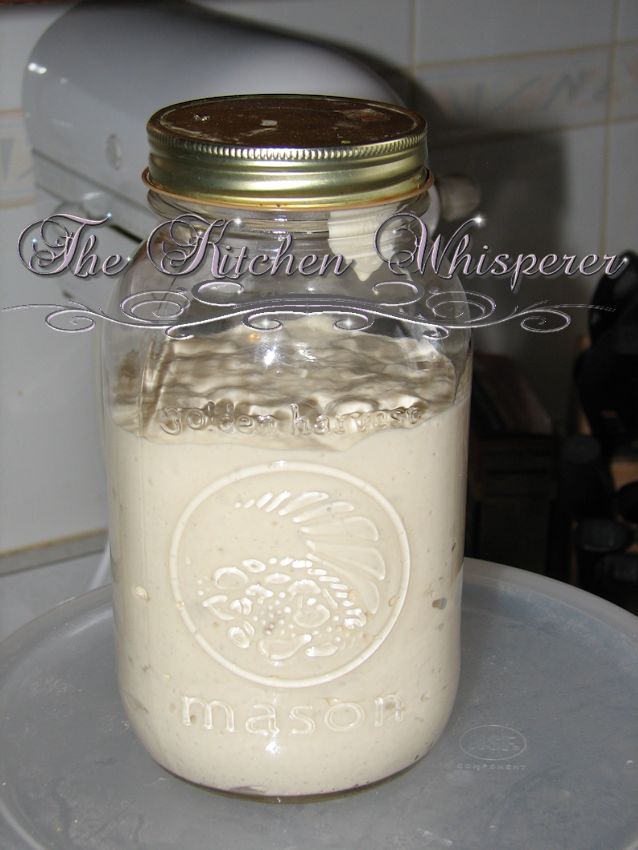
Sourdough Starter – Recap
Find more fantabulous recipes, tips and tricks at www.thekitchenwhisperer.net. Also, join our TKW Family on Facebook

Ingredients
- 2 cups warm water (if your water is heavily chlorinated or unfiltered, use bottled water) Chlorine retards the starter and can affect it.
- 1 tablespoon sugar
- 1 tablespoon instant dry yeast
- 2 cups All Purpose Flour
- 5–6qt glass or ceramic bowl (do not use metal)
- Clean dish linen
Instructions
Getting Started
- Pour the water in the bowl and add the yeast then sugar. Do it in this order.
- Whisk this around until the sugar dissolves.
- Gradually stir in the flour until it’s all combined. It’ll look like thick pancake batter or possible a tad thicker.
- Cover it with a clean dish linen and set it aside on your counter top out of the way.
- Let it go for 24 hours then using a wooden spoon, stir it as it will separate.
- Repeat step 5 for 3-8 days or until the bubbling has subsided and a yeasty, sour aroma has started.
- Transfer this to a quart size mason jar (or any 2qt size glass or ceramic jar) and cover it with a lid that has holes poked in it. You NEED to have poked in it as if you don’t CO2 will build up and if it can’t escape the jar will explode. What I did was used a 2qt mason jar and had Mr. Fantabulous use a drill to drill out 2-3 air holes in the metal lid.
- Put this in the refrigerator until you’re ready to use it.
- Now as it sits in the refrigerator you’ll notice a green/gray liquid that floats on the surface of it. This is OK. This is from the yeast/starter not getting in contact with air. No air results in alcohol. All you need to do is blend the alcohol back into the starter. This will give you that unique strong sourdough flavor. If it’s too pungent, just measure out what you pour off and then replace with warm water. Remember you always want your starter to be pancake batter consistency
Feeding your starter
- Most recipes call for a ‘fed’ starter. Typically most recipes call for 1 cup of starter so at least 12 hours before you are ready to make your bread you need to do the following steps:
- Take your starter out of the refrigerator, stir it and pour into a large glass bowl.
- Measure out 1 cup and discard
- Add in 1 cup of flour and a ½ cup of warm water.
- Stir to incorporate and cover with clean linen
- Allow to sit for at least 12 hours (I usually go a day). This will reactivate the yeast. When you uncover it, it will be all bubbly and ‘yeasty’
- Stir and measure out how much you need for your recipe (1 cup per our example).
- Now you need to feed it again – add 1 cup of flour and ½ cup of warm water.
- Stir then cover. Let this sit at room temperature until all bubbly (about 3-5 hours)
- Once bubbly, stir it again and pour it into a 2qrt glass jar and cover with your “holy” lid.
Storing your Starter…
- Like I’ve said, starters are a labor of love. Just like kids, they need fed however you only need to tend to them once a week. As stated in the one step above, you may notice that liquid floating on the top. If it’s anything but green/gray discard as it went bad. I know something sour “went bad”. So anyway you need to feed it.
- This step is almost like the ‘Feeding your starter’ instructions above but you don’t have to let it sit out.
- Stir in the liquid and then pour all of the starter into a glass bowl.
- Keep stirring until it’s pancake batter smooth ensuring that the alcohol liquid is all incorporated.
- Remove 1 cup of starter and discard.
- Add in 1 cup of flour and a 1/2 cup of warm water.
- Stir until smooth and pour into a clean 2qrt glass mason jar and cover with holy lid.
- Put the jar in the fridge. You don’t have to wait for it to become bubbly.
Notes
I know it sounds like a lot of work and I’m not going to kid you, it is initially but it’s worth it. It just takes patience. So if you started your starter today, you would be able to make fresh sourdough bread by the weekend. What’s really, really nice about sourdough starter is that, if given love and the proper feedings it can be passed on in your family for generations! Most bread companies have starters over 50-100 years old!
For detailed pictures and each day’s steps check them out here:




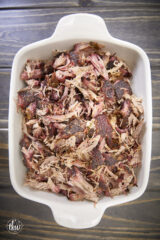

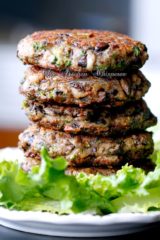
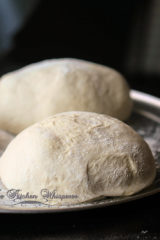
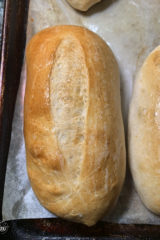
My starter is too sour. I left it on the counter for the 1st 7 days that I was feeding it. Then, I kept it in the refrigerator. The bread I made was too sour. Is there a remedy or do I start over?
Hi Sharon!
This could have happened due to the brand of flour used. If it’s too sour, empty out all but 1 Tbl of the “hooch”. Feed as normal.
I’d repeat that a few times but keep in mind the older it gets the stronger it will become as that’s the nature of sourdough.
Best Kitchen Wishes!
I have used several different starters aND this one is the best one I found.
Thank you so much Cindy!
Best Kitchen Wishes!
Has anyone every froze a sourdough starter? I make Amish Friendship Bread and I ran out of friends to give a starter to and I didn’t want to throw my starters away so I froze one cup per zip lock baggie. Turns out I had six starters. The next time I made the bread I pulled a starter from the freezer and made two loaf’s without a problem. Now I haven’t started another starter batch yet due to I still have 4 in my freezer.
Hi Vickie!
I do it all the time. I tend to put my ‘discard’ in baggies and freeze them. Yeast like that freezes beautifully.
Best Kitchen Wishes!
I have a sourdough that I started very similar to this almost 10 years ago! As long as I make bread at least every couple of weeks, I can do a simplified sourdough: before bed, I take my pint jar out of the fridge and put it in my crock. I add one cup water and one cup of flour. There’s approximately 1 cup of starter. The next morning, I put 3 cups flour, 2 tsp salt, 1 1/2 cups starter, 1 1/2 cups water in my breadmaker, run it on the quick dough cycle (45 minutes), check to see if it needs more water as it runs for the first 5 minutes. I put the rest of the starter back into the pint jar, and back into the fridge. I let the bread maker sit with the dough for another 2-3 hours, until it has risen to the top, then I take it out, form the loaf or loaves, let it rise for 1-2 hours, then bake at 450 degrees. I sprinkle with flour, slash with a sharp knife, spray with water. In the oven, the first 10 minutes I spray with water every 3 minutes. Depending on the size of the loaves, they bake in 30-45 minutes, until 190 degrees and a dark golden crumb. I love my sourdough! I should name my starter though…
I am new to baking bread and making a starter, my question is why do you discard 1 cup of starter? And do you have to put it in the refrigerator and let it sit a few days before you can make bread?
Hi Julie!
It’s pretty straight forward. If you add flour and water to your starter without removing any of the starter first, the flour won’t feed as many of the yeast cells. But if you remove some starter first, before feeding, there’s more new food, proportionally, for the yeast.
The discard starter you can use it say for pancakes, pretzels and other items. It’s great in pizza dough as well!
Now with regards as to when to use it, look at these steps:
When you’re ready to use it, remove the starter from your fridge.
Measure out 1 cup and discard
Add in 1 cup of flour and a 1/2 cup of warm water.
Stir to incorporate and cover with clean linen
Allow to sit for at least 12 hours (I usually go a day). This will reactivate the yeast. When you uncover it, it will be all bubbly and ‘yeasty’
Stir and measure out how much you need for your recipe (1 cup per our example). THIS IS WHEN YOU ARE READY TO USE IT FOR A RECIPE! This is what you put into your recipe. Meaning you have to use it then.
What’s left is the stuff you put back in the fridge after you feed it.
Now you need to feed it again – add 1 cup of flour and ½ cup of warm water.
Stir then cover. Let this sit at room temperature until all bubbly (about 3-5 hours)
Make sense?
Best Kitchen Wishes!
Thank for your help, can’t wait to bake my bread.
Can I use Active Dry Yeast for this… is there a conversion
Hi Rebecca!
I had to double check with my friends at King Arthur on this one to be sure. You can interchangeably use active dry yeast for instant. They can be substituted for one another 1:1. Active dry yeast is a little bit slower off the mark than instant, as far as dough rising goes; but in a long (2- to 3-hour) rise, the active dry yeast catches up. If a recipe using instant yeast calls for the dough to “double in size, about 1 hour,” you may want to mentally add 15 to 20 minutes to this time if you’re using active dry yeast.
One time when you might not want to use instant and active dry yeasts interchangeably is when you’re baking bread in a bread machine. Since bread machines use a higher temperature to raise dough, substituting instant for active dry yeast 1:1 may cause bread to over-rise, then collapse. When baking in the bread machine, and substituting instant yeast for active dry, reduce the amount of instant yeast by 25%.
Best Kitchen Wishes!
Thank you…. I randomly make breads but most recipes I have chosen call for active yeast…
I do not use a bread machine as I have never been happy with the outcomes.
I am going to START my starter today… excited as this is my FIRST ATTEMPT at SourDough Starter & Breads..
I’m the same way about bread machines. I had one centuries ago when they first came out and I hated it. I never got the right consistency. In the recap I have links for every day so you can follow along on what things should look like. Normally it can take 7-10 days depending on where you live (humidity, temperature, etc). Just nurture and love it and it can last generations.
When you’re ready to make your first loaf, drop me a line and I can give you some great ‘starter’ sourdough bread recipes. I have a bunch on here too.
Best Kitchen Wishes!
I will be excited to use this starter…. I have never done a sour dough before let alone made a starter..
I do have a question… from days 2-7 all you do is stir it every day… you dont feed it at all… I have seen many recipes that make you add water & flour every 12 hours… but I also see those recipes do NOT begin with yeast either… Is this where the term “wild yeast” comes in… you are actually fermenting to create the yeast…
My GGrandmother was always making her own bread every day and I just LOVED it …it was one of my favorite thing… She did everything from scratch and as a child I would watch her and eat all her goodies… She passed away about 25 years ago.. her recipes died with her and the ones she did write down had been thrown away…
Yep days 2-7 you don’t feed it, just stir. Yes, wild yeast occurs from those daily feedings. Yes, the fermentation is what builds the yeast. It turns out that there is yeast floating in the air all around us all the time, and some of this yeast will make its way to the flour/water mixture. It will then start growing and dividing. Thus the fermentation.
Just remember making bread requires patience. You can do this! Plus I’m here if you need me!
Best Kitchen Wishes!